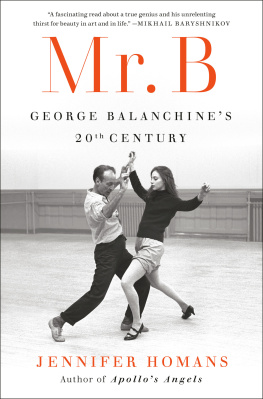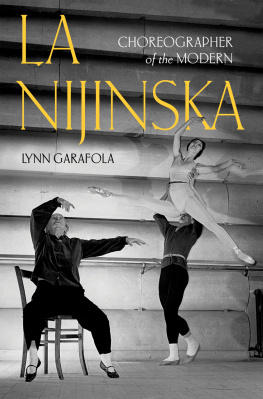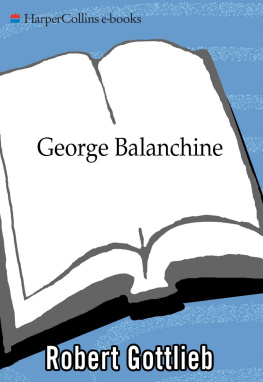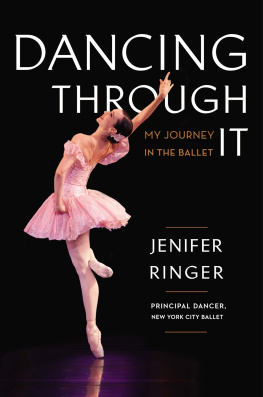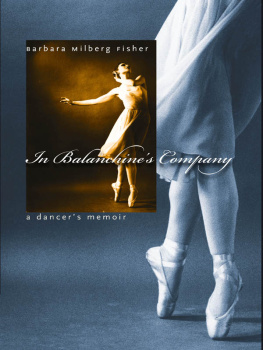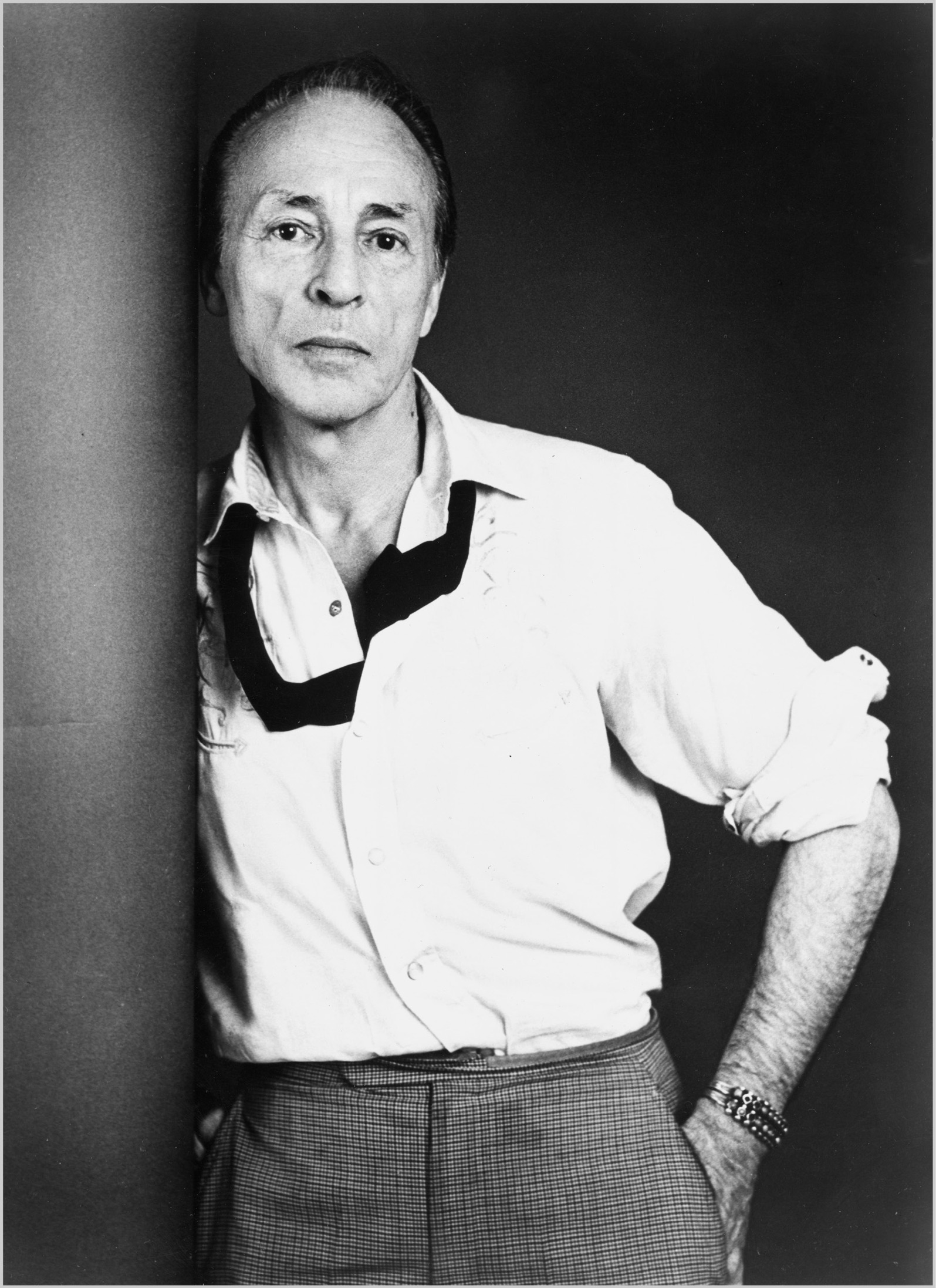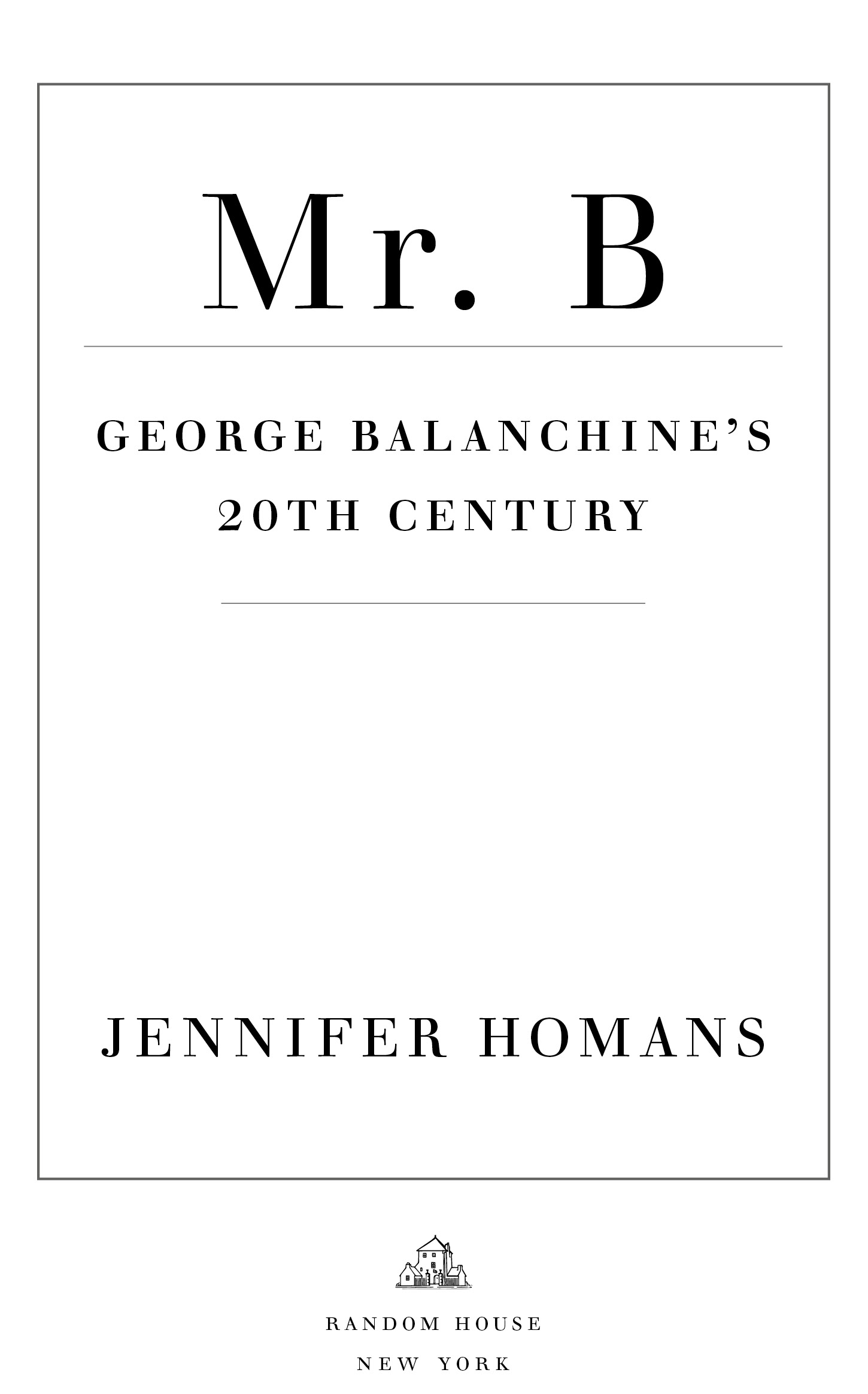Also by Jennifer Homans
Apollos Angels
When the Facts Change: Essays, 19952010 (by Tony Judt, edited and introduced by Jennifer Homans)
Copyright 2022 by Jennifer Homans
All rights reserved.
Published in the United States by Random House, an imprint and division of Penguin Random House LLC, New York.
Random House and the House colophon are registered trademarks of Penguin Random House LLC.
Text and image permissions begin on .
Library of Congress Cataloging-in-Publication Data
Names: Homans, Jennifer, author.
Title: Mr. B : George Balanchines 20th century / by Jennifer Homans.
Description: New York : Random House, 2022. | Includes bibliographical references and index. |
Identifiers: LCCN 2022002681 (print) | LCCN 2022002682 (ebook) | ISBN 9780812994308 (hardcover) | ISBN 9780812994315 (ebook)
Subjects: LCSH: Balanchine, George. | BalletHistory20th century. | ChoreographyHistory20th century. | ChoreographersUnited StatesBiography.
Classification: LCC GV1785.B32 H66 2022 (print) | LCC GV1785.B32 (ebook) | DDC 792.8/2092 [B]dc23/eng/20220125
LC record available at https://lccn.loc.gov/2022002681
LC ebook record available at https://lccn.loc.gov/2022002682
Ebook ISBN9780812994315
randomhousebooks.com
Book design by Jo Anne Metsch, adapted for ebook
Cover design: Alison Forner
Cover photograph: Martha Swope The New York Public Library for the Performing Arts (George Balanchine and Suzanne Farrell rehearsing Slaughter on Tenth Avenue), retouching by Tom Hallman
: St. Petersburg State Museum of Theatre and Music. BALANCHINE is a trademark of The George Balanchine Trust.
ep_prh_6.0_141943056_c0_r1
Contents
For Daniel and Nicholas
Why we use words? You know why? To communicate with somebody else, you see. The real life, the real realityIts not on earth, its what we cannot explain with words.
You would never abandon things on earth, so thats why you dont get anywhere. The portals are open for you, but the passage is narrow.
I believe in the moment. I believe in that moment, I believe what I see. The importance of the dance is the person. Choreographer doesnt exist. He suggests. Ballet belongs to a dancer that is now at this moment in front of you.
George Balanchine
Introduction
DEAD SOULS
This: the suffering, the grit and hardship of everyday life, never once appeared in Balanchines dances. It did not interest himit was pedestrian, a degradation of the human body and spirit. Even the dead bodies in his ballets were set against a backdrop of eternity and had a sense of spirituality and redemption that elevated the body out of the ordinarydead bodies, yes, but really dead souls. These were bodies purified and transfigured by the disciplined practices of ballet. And if loss was a theme in his dances, so were love and full-fleshed joy. He made many gorgeously costumed ballets that built to a crescendo with colorful kaleidoscope patterns of dancers synchronizing ever more complicated and demanding rhythms. These were fantastic entertainments that lifted audiences into the great good humor of being alive. He saw himself as a musician and theater man, a traveling ballet master, and he had worked in great opera houses and touring troupes, from the Russian czars Mariinsky Theater of his training and youth to the Paris Opera, Broadway, Hollywood, and his own New York City Ballet (NYCB), which he cofounded in 1948. He said he was a showman, and like the old commedia dellarte performers, he reinvented himself many times. He seemed ageless. For his dancers, even at the end of his life, Mr. B was a god and they surrendered their own young lives for a chance to dance his glorious ballets.
There was some part of him that did not think of himself as mortal at all. I am not a male. I am water and air and I am servant. What this suggested, and it was a central theme of his life, was that he felt like a man with two bodies and he lived in them both simultaneously, with at times heartbreaking personal consequences. The first was the trousersthe earthly man delighted by sensual feelings and desires, who loved good food, fine wine, beautiful women. He devoted his life to dancing and everyone said that in rehearsals, even in his old age, he was more physically animated, expressive, and alive than any of his astonishingly athletic and youthful performers. The cloud or breath was something else, and he saw it as the source of his gift. It wasnt mind, exactly. It was more a physical inwardness, and at moments he could appear strangely detached, almost androgynous or asexual, like an angel who knows everything but feels nothing. A servant bearing dances to the gods. An airy floating spirit, elusive at times, even to himself.
He lived through his dancers. He was not like Mozart or Einstein or Picasso, working alone to change the way people hear or think or see. He needed dancers and a whole theatrical enterprise, but dancers above all. His gift didnt exist without them, and the most disoriented moments of his life were those when he found himself alone and unattached to dancers. He had to have them, and he gathered them and shaped them, making his own paints and pigments from their flesh and blood, meticulously reading and sculpting their minds and bodies. Making dances was personal, psychological, intimate eventhey liked to say he knew them better than they knew themselvesand because women were his primary material, and because he was a man who loved women, sensuality and love were always a part of it.
For a genius, Balanchine felt small. Maloross, he called himself because he felt undersized, and as a child in Russia they had called him the rat for his persistent facial tic, a kind of nervous sniffing and twitching under the right eye as he spoke, almost like a visual stutter. He sketched himself in childlike drawings at the end of letters he wrote to lovers as a tiny mouse in the company of a large female cat that he fed and nurtured. In his minds eye, he was that man-mouse, mighty mouse!a flourish at the bottom of the page, and he didnt imagine himself as particularly attractive, though women found him sexy. The mouse was like the cloud or the breathsomething a bit secret in their midsta watcher scurrying around in his mind preparing great delicacies for his dancers and audiences to enjoy.
In reality, he was not small at all but physically quite average: average height, average weight, average proportions. He had fine, dark featuresI am Georgian, he liked to sayand his Caucasian roots were visible in his dark, almond-shaped eyes, pensive and inward in portraits but lit and expressive in life. His forehead was high, and he had a delicate but large straightedge nose (Bigger is better) that became his signature feature in the sketches of his face in profile that he used to sign letters. Only his hands were fleshy and muscular, perhaps from playing the piano, which he did almost daily for most of his life. He liked to work with his handscooking, but also carpentry and gardening. He could be found at the local market carefully touching and testing for firm cucumbers or the perfect tomato. Smells mattered, and once he could afford it, perfumes were a routine purchase for the women dancers he admired (a different scent for each).

